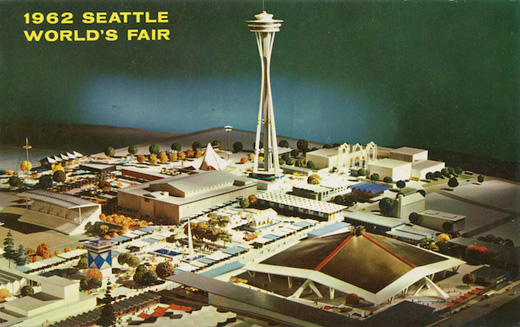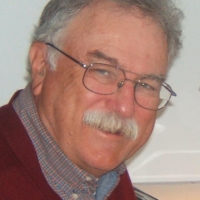
This article is an excerpt from the upcoming autobiography of former People’s World editor and long-time correspondent, Tim Wheeler.
Ironworkers were putting the finishing touches on the Seattle Space Needle in January of 1962 and construction workers were laying tracks on the elevated Monorail. The entire Pacific Northwest was anticipating with great excitement the opening of the Seattle World’s Fair, also known as “Century 21” in April of that year.
I was a student at the University of Washington, active in the campus chapter of the Student Peace Union (SPU). At one of our meetings, a member raised the question of the World’s Fair. Why not stage a march or rally of some kind to demonstrate that this event should be a celebration of world peace? Why not highlight the menace of the nuclear arms race and especially atmospheric nuclear testing that was poisoning the global atmosphere with strontium 90 and other deadly, radioactive toxins?
We all jumped at this idea. I suggested that we inflate a thousand balloons with helium the night before the scheduled opening ceremony April 22. I would draft a leaflet with drawings of the balloons and the headline, “Rising Hopes for Peace.” We would march to the gates of the World’s Fair carrying the multi-colored balloons and passing out the leaflets. At the signal that the fair was opening, we would release the balloons symbolizing those rising hopes.
Everyone was enthralled by this idea. We hoped that the rest of the anti-war movement in Seattle would join us, making it a demonstration of many thousands. We were deeply disappointed that the American Friends Service Committee and other antiwar groups settled on a different plan. They decided to hold a similar march three or four days later on the weekend when far more people could participate.
Nevertheless, we forged ahead with our idea. I drafted the leaflet. Artist Ray Cooper designed the front. We mimeographed several thousand copies.
Seattle Women Act for Peace donated the use of their storefront office less than half a mile from the front gates of the World’s Fair. The evening of April 21 before the fair was scheduled to open, twenty of us gathered at the WAP office around a big helium tank and began inflating the balloons. We had no idea how labor-intensive inflating 1,000 balloons would be. It takes nimble fingers to stretch the mouth of a balloon around the tip of one of those tanks, inflate the balloon, remove it, tie it in a knot, attach a string and let the balloon float up to the ceiling.
We worked into the wee hours of the morning and as we completed the task, the entire ceiling was covered with balloons four or five deep. Others were hand-painting placards with messages like “Stop Nuclear Testing NOW” and “Hands Off Cuba” reflecting the rising fear of a U.S. invasion to overthrow the socialist revolution in Cuba.
The next day, students, members of WAP, and many other peace activists gathered in front of the WAP office. The crowd swelled until several hundred were present.
As I recall, the World’s Fair was scheduled to open at about noon that day. So at 11 AM, bleer-eyed and yawning, we began our march to the gates of Century 21, singing peace songs and chanting, “Stop Testing NOW!”
The colorful balloons floated overhead as we marched through the immense crowds also headed to the fair.
We handed out our “Rising Hopes for Peace” leaflet explaining the meaning of the helium filled balloons, that we would release them at the World’s Fair gates at the exact moment of the opening of the fair to symbolize our determination to stop nuclear testing and move the world away from nuclear terror toward peace.
We arrived at the gates of the fair and formed a picketline walking back and forth with our balloons and signs to educate the crowds on the need to speak out and act for peace.
A few minutes later, a cannon boomed inside the fair grounds and a flight of warplanes zoomed in tight formation overhead. The World’s Fair had opened.
We released our balloons and they rose up above our heads. I said to myself, “I wish we had more, enough to blot out the clouds!”
Unbeknownst to us, Century 21 officials had the same idea! They too released balloons at that very moment, 2000 of them. So the sky was polka-dotted with three thousand multi-colored balloons and since many, though not all, those inside had seen our leaflet, they knew that all the balloons symbolized rising hopes for peace.
Century 21 was officially designated a World’s Fair. Yet, it fell short of a true World’s Fair. The Soviet Union and China were not there. None of the Eastern European countries had pavilions. Cuba was absent.
Yet in early May, Gherman Titov, a Soviet Cosmonaut, and his wife came to visit the World’s Fair drawing huge crowds wherever they went. Joyce had a job as a waitress at the World’s Fair, so I spent much of my spare time hanging around the restaurant where she worked. Often, I strolled around among the various pavilions.
One morning I visited the NASA Pavilion. I knew that Titov was scheduled to visit the NASA pavilion. Maybe I would catch a glimpse of him. I heard a din of voices and footsteps of many people coming near. I looked down the corridor and there was Titov headed my way, led by NASA officials and followed by a hundred reporters and photographers and many autograph seekers.
I could see that Titov was a lively, gregarious man, laughing, exchanging witticisms with the people around him. He paused in front of a NASA space capsule. He listened gravely as a NASA official explained the inner-workings of the capsule to him.
I wanted to wade through that crowd, shake his hand, explain to Titov that we members of the Student Peace Union were working hard to prevent war, that his presence here in Seattle reflected our “rising hopes for peace.”
Alas, instead of peace, our world lurched toward war, an epoch that would cost many millions of lives in the years that followed. I found a job working in the wholesale tobacco business owned by Anci Koppel, one of the staunchest leaders of Seattle Women Act for Peace.
Joyce continued her waitress job at the World’s Fair all that summer and into the fall. She was at work when the Columbus Day storm hit Seattle on October 12. The sky turned an ominous deep dark gray. The wind screeched and howled. Trees were uprooted. Power lines came down. Sometime in the late afternoon, the power for the entire city went out. Joyce was trapped at work. She managed to make a brief phone call to tell me not to worry, that she would somehow make it home. She walked the entire way in the pitch dark city, arriving at her tiny apartment about 2 a.m.
As bad as that storm was, it was nothing compared to an evening 10 days later when President John F. Kennedy went on the air.
Tim Lynch and I were walking home from downtown Seattle and stopped at the Red Rooster Inn for a beer (Honestly, I am not a heavy drinker!). Kennedy came on the television screen above us. We listened in appalled silence to his ultimatum: The Soviet Union must remove all nuclear missiles from Cuba NOW!
We left our beers on the bar untouched and hustled the rest of the way home. I was on the phone to J.C. Burdick to find out what the Student Peace Union was going to do. Already the organization was in motion. J.C. called us into an emergency meeting. We decided to stage a peace march to the Federal Building immediately with the message: “No nuclear war! Hands off Cuba!”
And march we did to the Federal Building in downtown Seattle. A menacing-looking gang of toughs were already in front of the Federal Building, ready to attack and beat up anyone like us protesting preparations for war. We picketed across the street. We had been on the picketline only about half an hour when the thugs started taunting us, shaking their fists and screaming, “Go back to Russia!”
One of the SPU leaders walking beside me said in a low, worried voice, “I think we had better leave. This is a very dangerous situation. They are about to come across the street and attack us.”
I argued vehemently against it. “We just arrived. We are exercising our rights.”
J.C. Burdick spoke up. “I think he is right. There could be violence.”
So we terminated the picketline.
We did not know then that cooler heads were working to defuse this menacing confrontation. ABC News reporter John Scali was meeting over lunch with Soviet Embassy counselor, Aleksandr Fomin (the cover name of KGB agent Aleksandr Feklisov), to exchange proposals aimed at de-escalating the crisis.
Fomin told Scali that Soviet Premier Nikita Khrushchev would withdraw all Soviet missiles from Cuba in exchange for Kennedy’s promise never to invade Cuba. The deal also included U.S. agreement to remove missiles from Turkey aimed at the USSR. The U.S. and the Soviet Union both agreed to this solution.
It was a masterstroke that removed a nuclear danger to the U.S. and the USSR while also securing the Cuban revolution from U.S. intervention.
It was an agreement that averted war. It also enraged the most extreme warmongers in the U.S., including Kennedy’s own appointee as head of the Joint Chiefs of Staff, Air Force General Curtis Lemay. He had seen in this crisis an opportunity to invade Cuba and destroy the revolution. LeMay had the bombers on the runway, troops ready to board the invasion landing craft. Kennedy and Khrushchev had jerked the rug from beneath them.
The years that followed were filled with tragedy: multiple assassinations, starting with the murder of President Kennedy, his brother Robert, Martin Luther King Jr., Medgar Evers, Malcolm X. The war in Vietnam escalated, a conflict that cost the lives of millions of people in Vietnam, Cambodia, and Laos, and nearly 60,000 U.S. G.I.s. I might have been one of them.
And all through those tragic years, Joyce and I and our comrades never wavered. We kept marching and held on tight to our “rising hopes for peace.”
Photo: Postcard from the 1962 World’s Fair in Seattle.

MOST POPULAR TODAY


Zionist organizations leading campaign to stop ceasefire resolutions in D.C. area

High Court essentially bans demonstrations, freedom of assembly in Deep South

Afghanistan’s socialist years: The promising future killed off by U.S. imperialism

Communist Karol Cariola elected president of Chile’s legislature






Comments